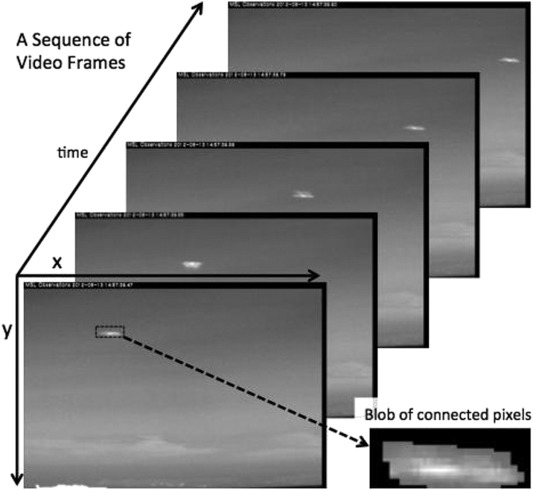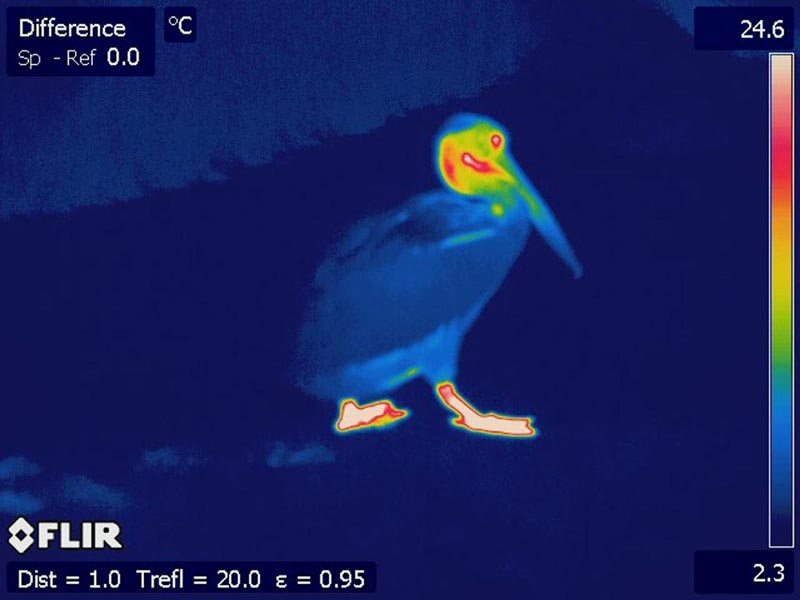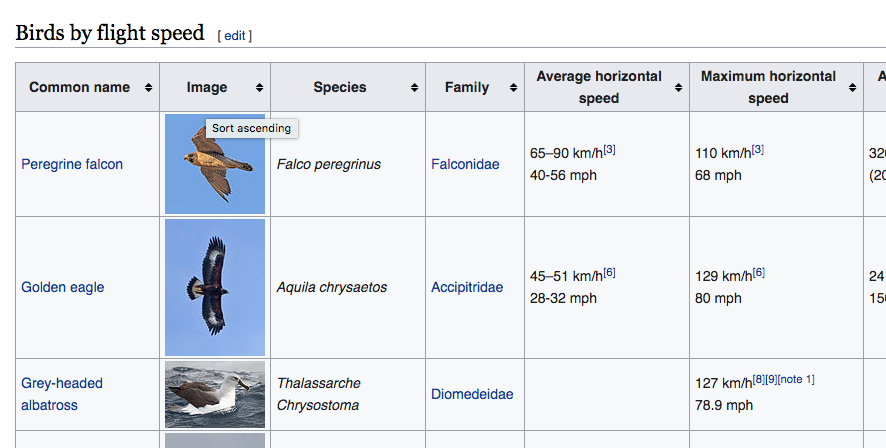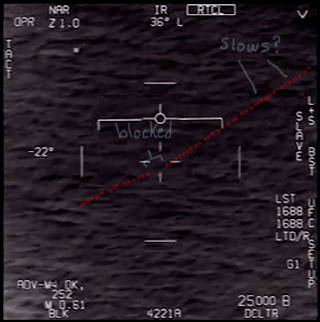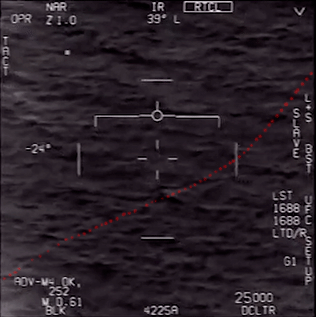Source: https://www.youtube.com/watch?v=PLyEO0jNt6M
[Note: the above video is a simplified summary of the findings in this thread]
Original Video: https://www.youtube.com/watch?v=dMnBxI4fTac
Source: https://www.washingtonpost.com/outl...bf9d112159c_story.html?utm_term=.7ef229f30df7
TTSA:
https://coi.tothestarsacademy.com/2015-go-fast-footage/
[NOTE: 259 knots is incorrect. The number indicated is CAS (Calibrated Air Speed), which is the air speed read by the instruments calibrated for sea level. Adjusting for 25,000 feet altitude the actual True Air Speed is 369 knots. See: https://www.metabunk.org/posts/220136/]As the video starts, the sensor is in infrared “black-hot” mode – black elements in the display are warmer than the dark, or lighter color, areas. It is at zoom factor 1.0. The F/A-18 Super Hornet is at 25,000 feet altitude, 259 knots (~300 mph, Mach 0.61), and in level flight. The sensor is aimed 22 degrees below the horizon and 36 degrees to the left of the F/A-18’s direction. The ATFLIR tracking trap box is a square in the center of the screen. The ocean surface is clearly visible in the background.
My first thought here is that it's a bird. When it first locks on we have:
-26°, 4.4 RNG, 25,000 feet barometer altitude.
Then later,
-35°, 3.4 RNG, 25,010 alt (essentially the same alt)
I'm assuming RNG is a straight line, not horizontal distance, then that gives us:
4.4*sin(26 degrees) = 1.92 nautical miles below the plane
3.4*sin(35 degrees) = 1.95 nautical miles
So assuming those numbers are more or less accurate then it's an object that's around 13,000 feet ((25000 feet) - (1.95 nautical miles)) in altitude, viewed from a jet at 25,000 feet. Basically it's half way between the jet and the ocean surface.
Hence the perceived motion of the object against the ocean surface, even if it were moving very slowly, would be the same as the speed of the jet itself. This is hugely magnified by the high zoom (NAR, or around 1.5° FOV). Here's an example of a static object that looks like it's moving through some trees:
Source: https://www.youtube.com/watch?v=IRd1RY2PuvA
The strangeness of the footage is largely a function of the ability of the ATFLIR camera to lock on to a white spot and track it. This accents the visual illusion that the object is moving because the parallax effect.
The bird (or other slow moving object, but I suspect a large soaring sea bird [UPDATE: Now I think a balloon is more likely]) hypothesis tallies with the angle. The object starts out at 43° to the left, and continues left to 58°
The white dot, whatever it is, would be invisible to the naked eye. It's in NAR mode, which has a FOV of 1.5°. Hence they were ONLY looking at it on the ATFLIR.
Similar to the GIMBAL footage, but without the glare. See:
https://www.metabunk.org/nyt-gimbal-video-of-u-s-navy-jet-encounter-with-unknown-object.t9333/
[Update 3/15/2018]
Analysis shows the object does not vary altitude much, and the jet is also flying horizontally, so much of the analysis can be done in an overhead view.
This animation shows the effect of varying the turn rate on the calculated speed. The blue line is the simple two point analysis of the target object path with jet (red line) traveling in a straight line. The orange line is the projected target object path with a variety of turn rates from the jet.
With this model, the speed of the object could be anything from 28 knots to over 100 knots. This speed is relative to the atmosphere at the level of the jet, and so is consistent with a balloon + wind differential from 13,000 to 25,000 feet. Or a self powered bird.
Update Dec 2018 - Great new video of a balloon filmed from a Helicopter showing the parallax effect.
Source: https://www.youtube.com/watch?v=YYqVa59VRRc
Last edited:

